There are many reasons to visit Kaunas, Lithuania's second largest city. One of the newest reasons is that Kaunas has been one of the two European Capitals of Culture for 2022. Kaunas used the slogan the (Con)temporary Capital, a play on words based on its time as Lithuania's temporary capital and its goal of making art, food and culture more accessible to all communities. Surrounded by a stunning landscape at the confluence of the two largest Lithuanian rivers – the Neman and the Neris – the city is a delight for Kaunas residents and guests. It’s a pleasure to the eyes with its cultural monuments, Gothic and Renaissance style buildings, and offers of breaks in beautiful parks. Here is my selection of 7 things to do in Kaunas. Enjoy!
1) Walk around the old town
The maze of streets of the Old Town of Kaunas is great for walking because the city boasts the longest pedestrian zone in Eastern Europe. It includes Laisvės Alley and Vilnius Street. Vilnius Street is the main street of the Old Town. Life here is very vibrant: cosy outdoor cafes, many shops, and museums attract the attention of tourists. Another favourite stroll for Kaunas residents and guests is Laisvės Alley. It is the longest pedestrian street in Europe – 1.7 km long! The alley connects Vilnius Street and magnificent Kaunas Cathedral visible from a distance.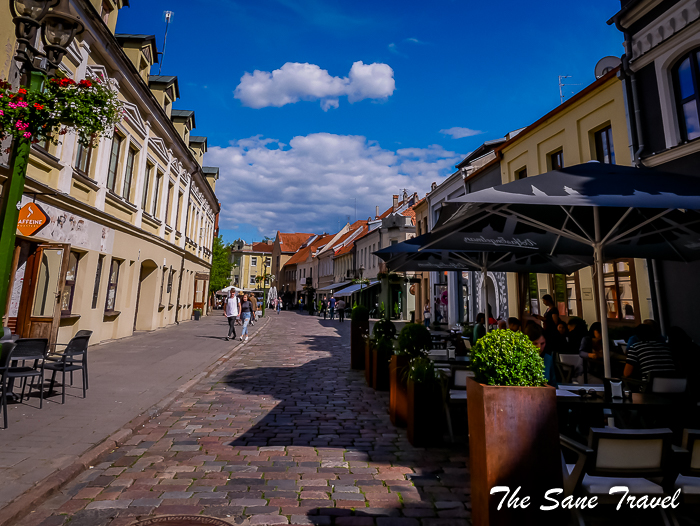
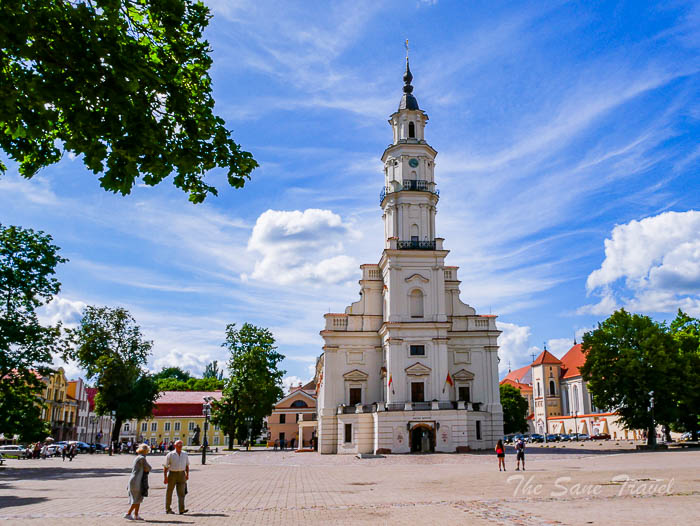
Make sure to find the house of Thunder at Aleksoto Street 6. It is a Gothic gem, one of the most original buildings of this era in Lithuania. The house was named after a brass statue of the pagan god of Thunder. It was also believed that the house was built on the old temple for the God of Thunder. It is said that this is the first brick house in Kaunas.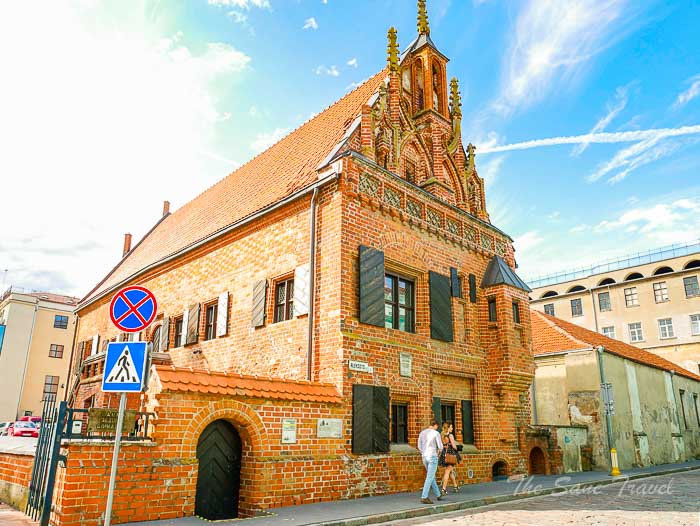
2) Admire Kaunas Castle
Kaunas Castle is the oldest stone castle in Lithuania, built in the 14th century to resist crusaders’ attacks. The chosen place was strategically good for watching nearby cities and trade routes. For some time in the 18th century, it was used as a prison. Currently, a branch of the Kaunas City Museum operates within Kaunas Castle, and various cultural events are held in its vicinity each year.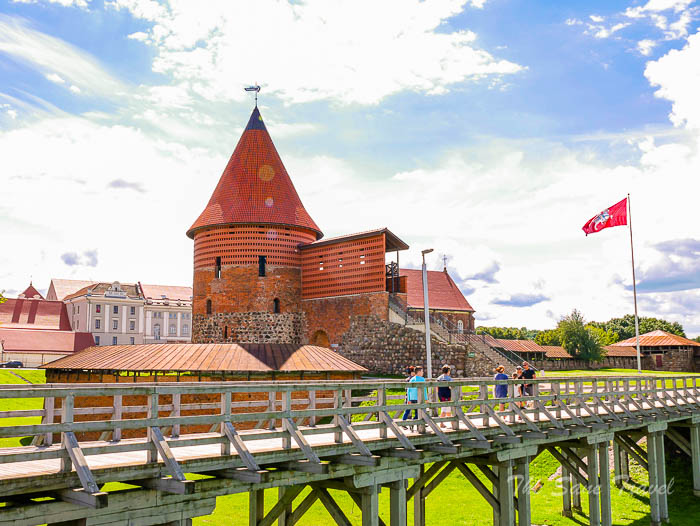
3) Visit Kaunas Cathedral Basilica
Kaunas Cathedral Basilica of Apostles St. Peter and St. Paul is the largest sacral Gothic building in Lithuania. It’s located very close to the Town Hall Square. Its construction was completed in early 17th century. The most important Basilica highlights: a crystal dome covering the two-tier sacristy ceiling in the Late Gothic style and the largest organ in Lithuania, constructed in 1882. Pilgrims are drawn to a 16th century painting of Our Lady of Sorrows.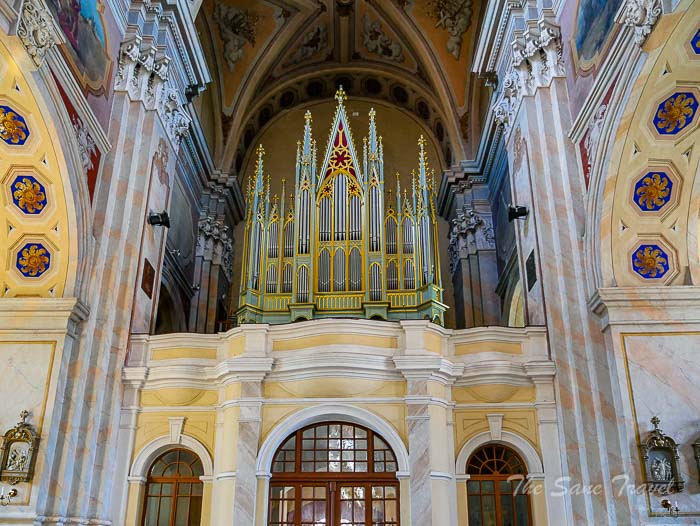
4) See the flood level meter at Vytautas Church
This church is considered to be the oldest in Kaunas. It was built on the north bank of the Neman River in the early 15th century for Franciscan monks. The construction was ordered and funded by Vytautas the Great as a commendation to the Blessed Virgin Mary for saving his life after a major defeat in the Battle of the Vorskla River. It is the only church in Lithuania that has the Gothic shape of a Latin cross and three naves. The church was damaged by floods and renovated a number of times. In the middle of the 19th century, the church was converted into Russian Orthodox St. Nicolas Church. The building was returned to the Catholic Church in 1919 and underwent major renovation works twice. It is interesting that over the years the ground level around the church has been raised significantly and the façades sank; to compensate for this, the windows were shortened and the side portals were removed.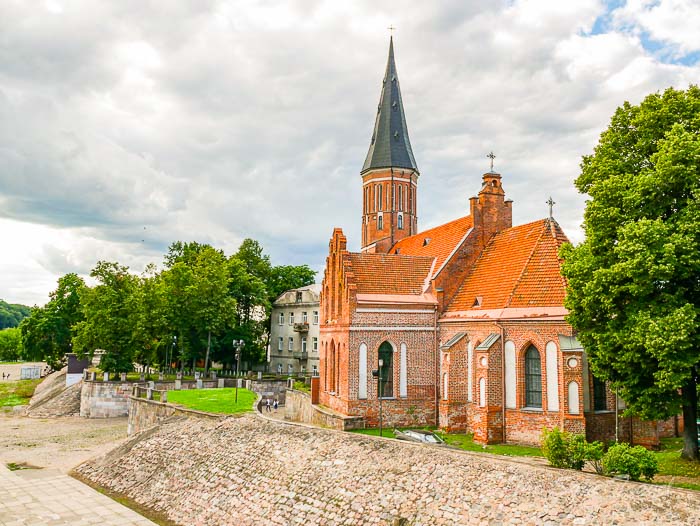
5) Watch street art in the city
The Old Town of Kaunas is a free art gallery in itself if you take some time to explore and step outside the main street (Vilnius Street). The narrow streets of the Old Town are full of amazing street art – from tiny hidden messages that make you smile when you find them and reflect on their meaning to huge pieces that take the whole wall. Take your time to explore and you’ll be surprised by how many unique works of art you can find here. If you are a real fan of street art, you can look for a Kaunas street art guide book with an integrated Kaunas street art map.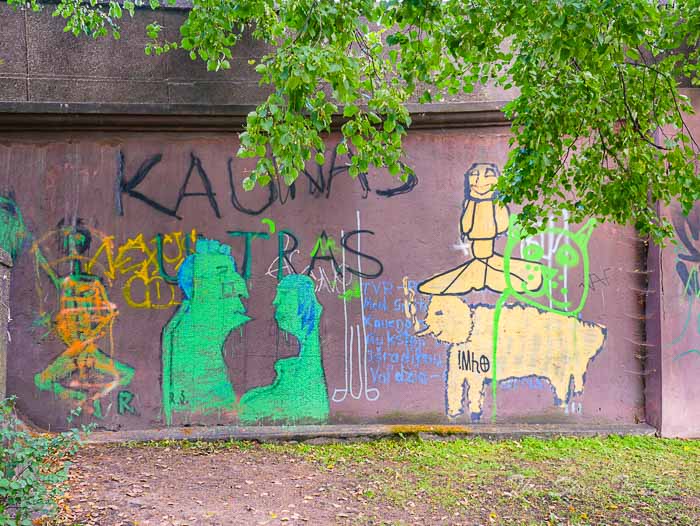
The last pictured is a work by Ramune Barkauskaite.
6) Ride the funicular railway
Try the funicular railway, the oldest in the Baltic States, operating since 1931. You even have two options to choose from Žaliakalnis and Aleksotas funicular railways. These “hill-climbing cabins” are now used as a means of communication and also as a form of entertainment. My choice was the Aleksotas funicular. You can find it after crossing the Neman River by Vytauto Didžiojo Bridge from the city centre. The funicular station is next to the bridge, a bit to the left of it. Aleksotas Funicular Railway was built in 1935 by a Swiss company. It’s 133 meters long. Old-style carriages without a driver can accommodate about 25 people. The funicular connects the city with Aleksoto Hill, which opens to the centre of Kaunas and the Old City, offering stunning views.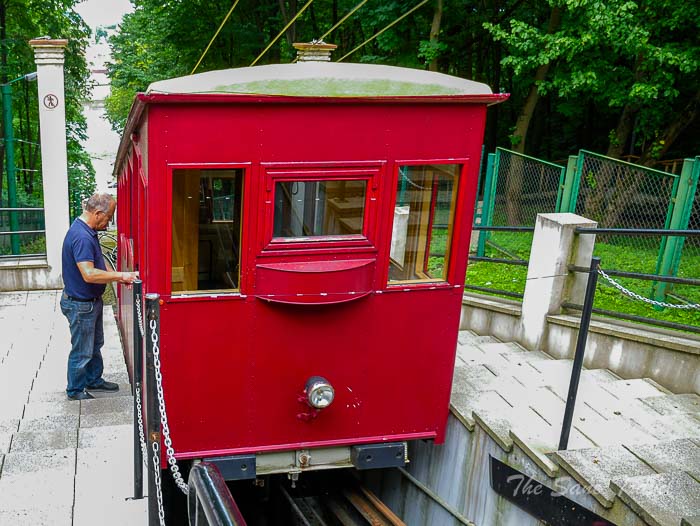
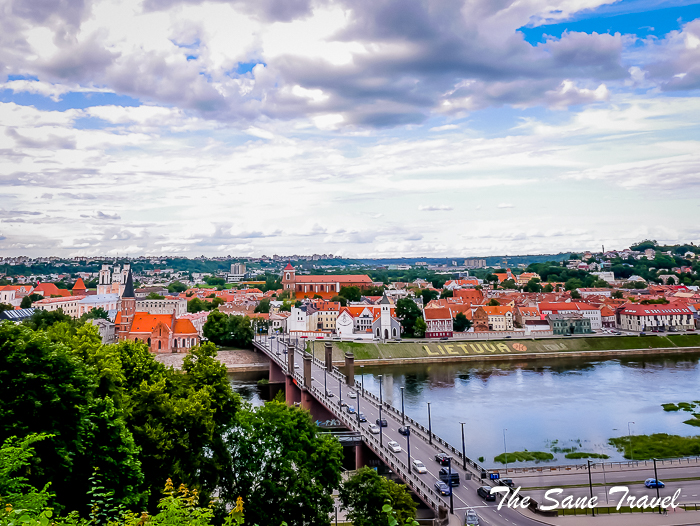
7) Visit Pazaislis Monastery
For me, it was a completely unknown gem, really stunning. The fact that it was not destroyed during World War II just adds more uniqueness to this place. The monastery is one of the most impressive architectural complexes across entire North-East Europe, a masterpiece of late baroque architecture. Pažaislis Monastery was founded in the late 17th century by a nobleman of the Grand Duchy of Lithuania and Great Chancellor of Lithuania, Kristup Zygmunt Pac, for the Order of the Camaldolese Hermits. The main construction work was resumed in the early 18th century. The monastery was designed by Carlo and Pietro Puttini, and Giovanni Battista Frediani. Exclusive architectural solutions were used for the first time in Europe: a hexagonal church plan, and a concave facade. The interior stucco work is ascribed to Joan Merli and the frescos to Michelangelo Palloni. I found the church just awesome in its beauty.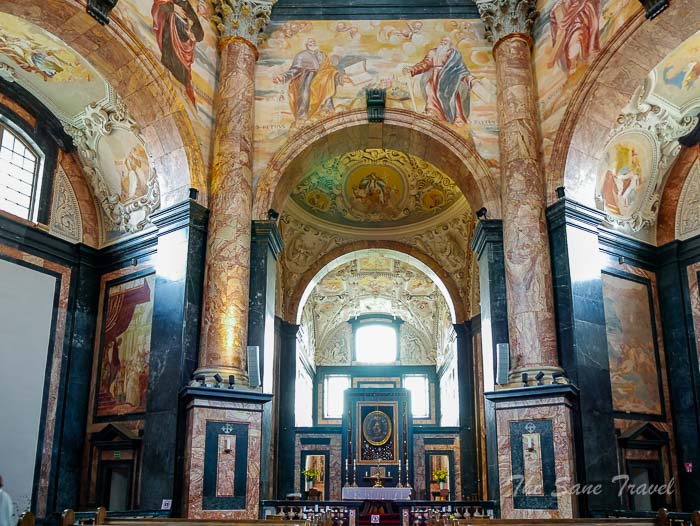
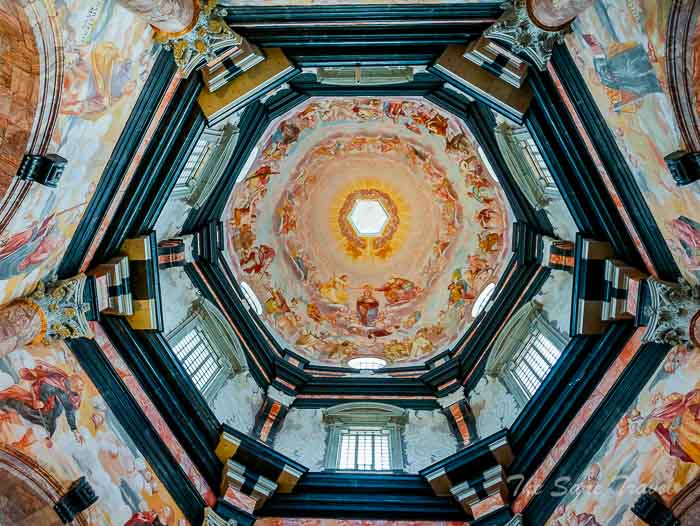
The cloister is currently occupied by the Sisters of St. Casimir congregation. If you have the time, you can stay in the monastery guesthouse, now turned into a four-star hotel called “Monte Pacis”.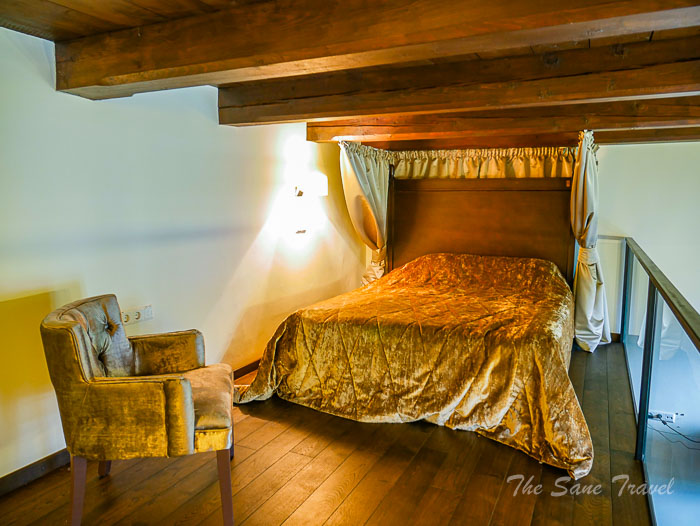 If you don’t have so much time, I strongly recommend trying some delicious dishes from the hotel’s restaurant.
If you don’t have so much time, I strongly recommend trying some delicious dishes from the hotel’s restaurant.
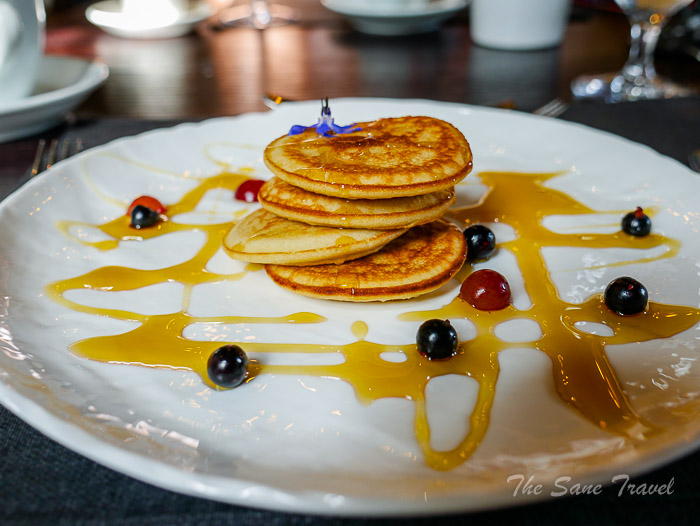
How to get to Kaunas?
You can go by plane. Kaunas International Airport is the 4th largest in the Baltic States after the three capital airports. You can travel from the capital of Lithuania Vilnius to Kaunas by public bus or train or just go by car. It's less than 1,5 hours drive from Vilnius.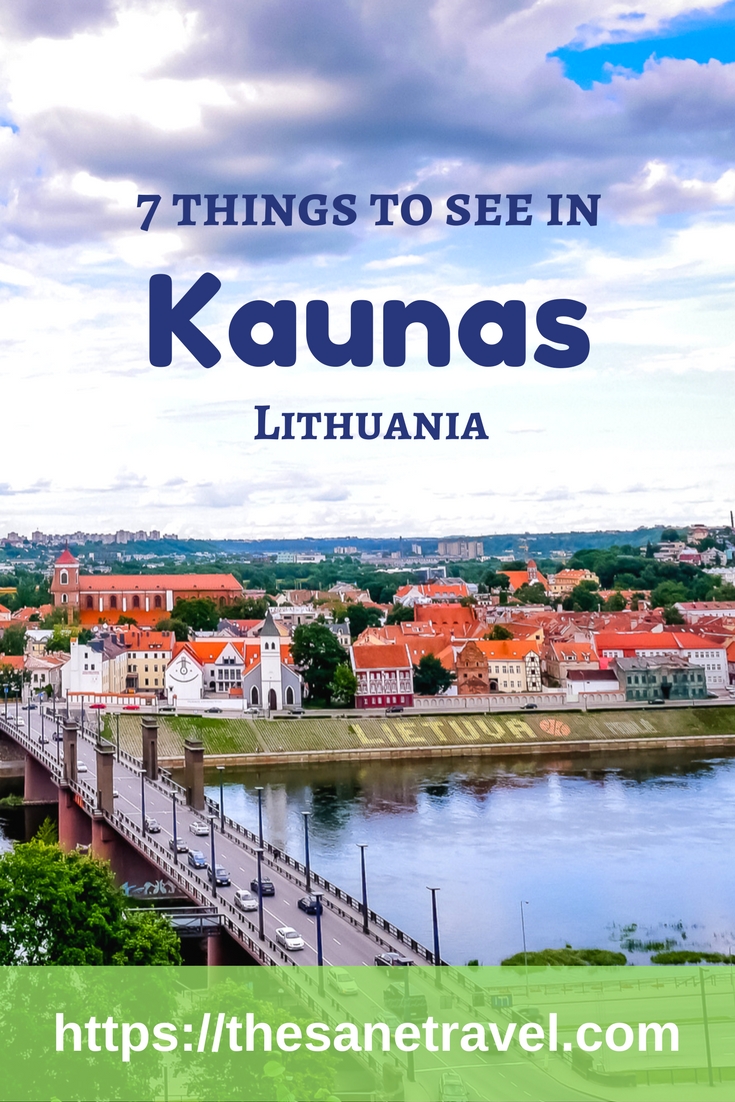 Have you been to Kaunas? What are your favourite sights of the city? Share in the comments section!
Have you been to Kaunas? What are your favourite sights of the city? Share in the comments section!
- Updated by Anita on April 02, 2025
Author: Anita Sane

About the author
Anita is a part-time traveller, passionate photographer and a retired career woman from Latvia, travelling mostly solo for more than 15 years. She is a skilled travel planner who plans and executes her travels by herself. Anita wants to show you how to travel the world and open your mind to new experiences. Follow her on Facebook, Instagram, Pinterest, Twitter and Bloglovin.
{module Sign for my blog news! (2)}


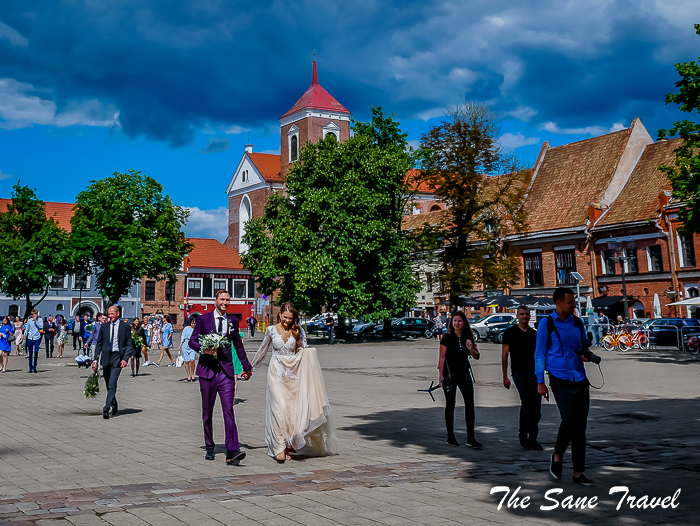

























Report
My comments